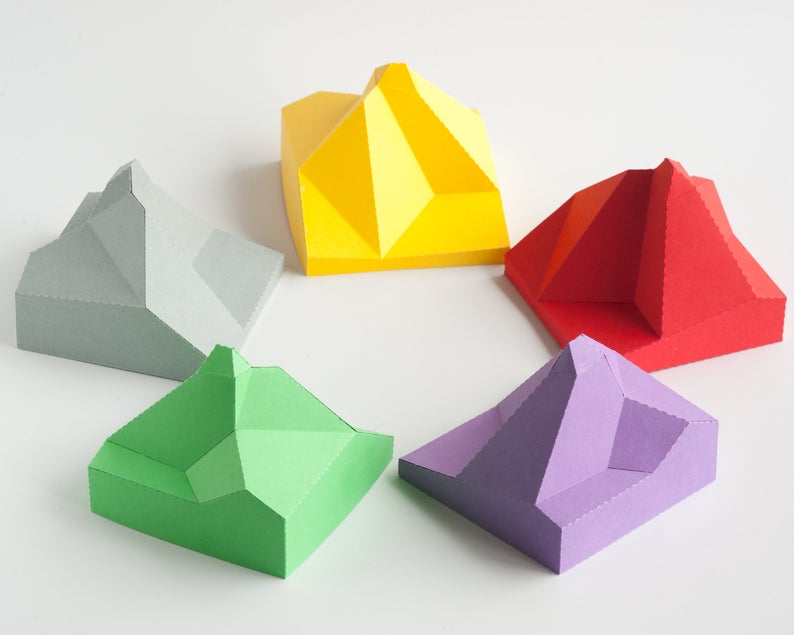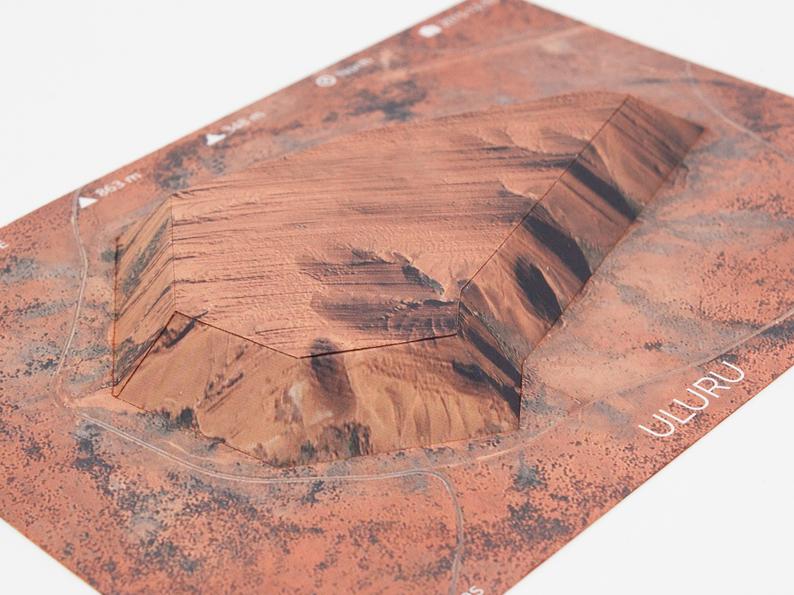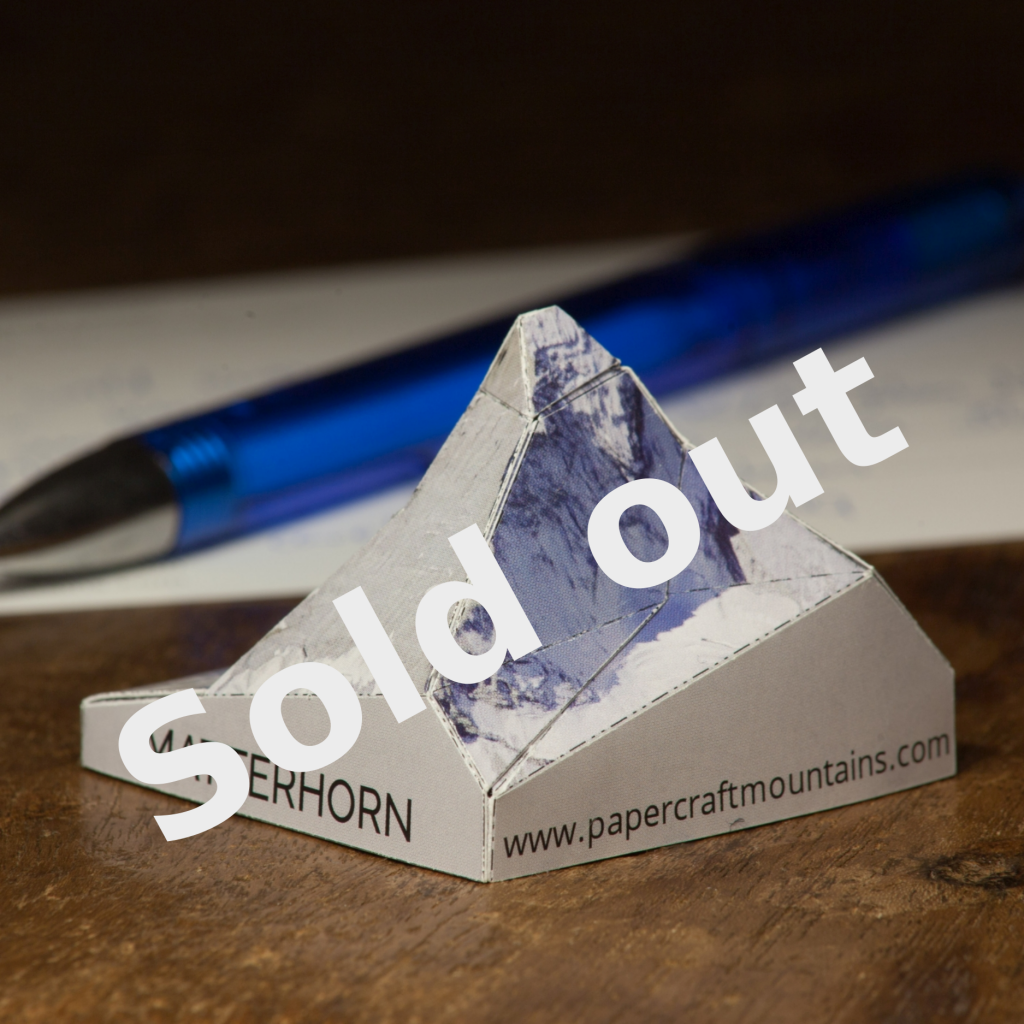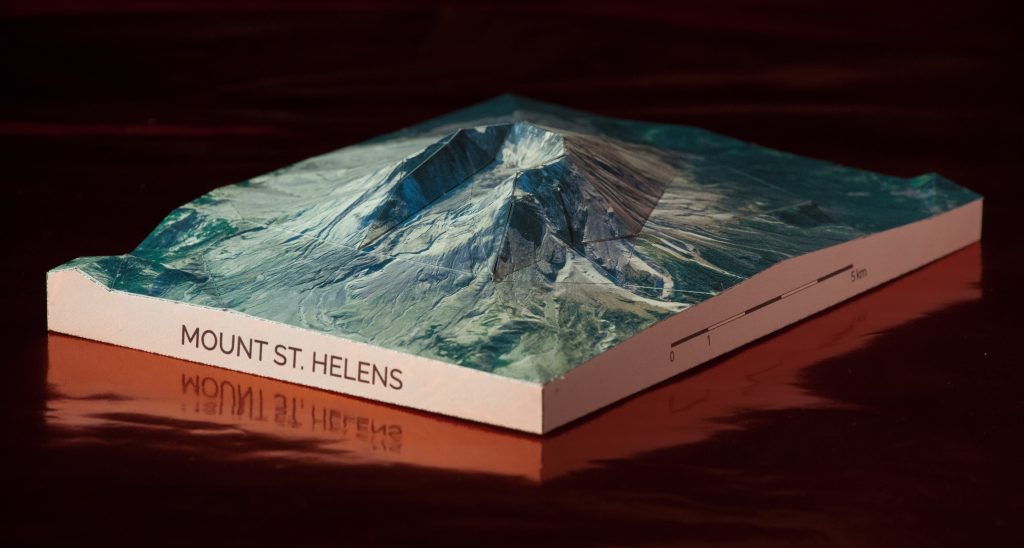







We love maps and mountains, and the process of turning them into 3D paper models allows us to explore both in great detail. It’s a really unique and fun experience to turn a flat sheet of paper into a mountain sculpture!
We hope you’ll enjoy building our mountains as much as we love developing them!
Jake: I was following Daniel Huffman’s tutorial on generating shaded reliefs using 3D rendering software, and slightly adapted the approach by first converting the DEMs to triangulated irregular networks before rendering them. The faceted appearance reminded me of the low-poly papercraft models that have been in vogue for a while, and I thought it might be fun to build a terrain model out of paper.
Johann: In June 2015 as we were cycling over the hills of Belgium we discussed what the qualities of such a model would have to be to be considered “optimal”. When we returned home to Brussels and Stuttgart we both started to adapt existing triangulation algorithms for this specific problem. In the end I came up with a solution that strikes a good balance between terrain fidelity and having a small number of triangles, avoiding difficult-to-assemble thin and tiny triangles as much as possible. My background in numerical optimisation certainly came in handy for this.
We presented the first results at the ICA Mountain Cartography Workshop in April 2016 in the beautiful mountains of Berchtesgaden, Germany and received a lot of very encouraging feedback. Since then we have been working on new models – the Matterhorn, Mount Fuji and Mount St. Helens are already available, Uluru is currently in the works.
Creating these mountain sculptures is a surprisingly involved process!
First we identify the mountain we want to scale (no pun intended) and search for the terrain data and license high quality aerial images to use as a texture. Jake’s experience with GIS (geographic information systems) software is really helpful for this!
Then we make a reduced representation of the terrain using triangles. We developed a software that helps us optimise the layout so that we get the highest fidelity model for a given complexity of the model. We really strive to make models that give the best result for the time you put into building them!
When the 3D model looks good we unfold it to make a printable template. Our objective here is to have parts that are easy to assemble. We typically make 3-5 test builds to determine a good construction order and tweak the layout a bit, like numbering the glue tabs in the best order of assembly.
The end result is a paper layout to build a mountain with just a craft knife or scissors and a bit of glue! The aesthetic is a beautiful blend of that hot low-poly faceted look and highly detailed textures that is really fascinating to build and look at!
If you are interested to learn more about the details of our method to create papercraft mountains, head on over here to download our paper.
Jake + Johann
Would you like to learn more about our method for creating papercraft raised relief maps from digital elevation data? We wrote a paper describing the method that has been included in the proceedings of the 10th Mountain Cartography Workshop. You will find out
You can download the paper here.
We create papercraft model kits of iconic mountains that you can build at home.
The models are available in our Etsy shop.
Keep up to date by following us on Instagram and Twitter.
NEW! You can now download free dioramas to present your finished models.




More models to come soon!
“At least once in their early years, cartographers, topographers, geographers, and geologists should construct a terrain model based on an interesting contour plan”
Eduard Imhof, Swiss Cartographer, 1982